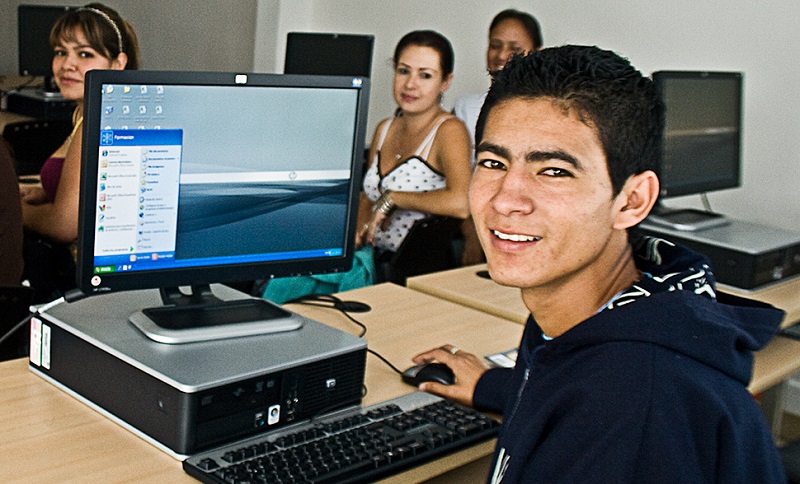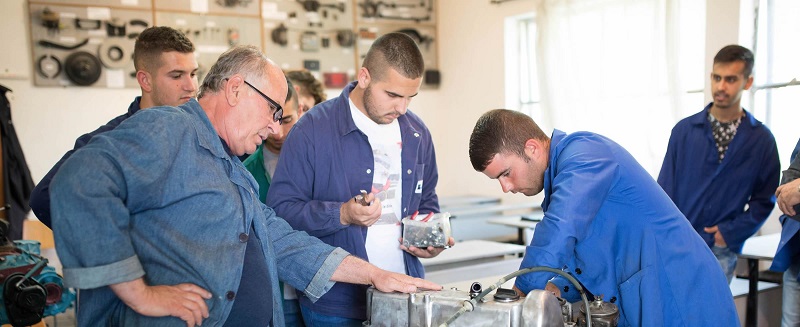How to ensure that young people have access to quality jobs? The issue of youth employment is becoming increasingly important in Mexico, where the new president, Andrés Manuel López Obrador, has announced a training and job placement program for young people as one of the main axes of its social policy. The program is called Young Building the Future and its main strategy lie in the link of 2.3 million young people with work centers, mostly with the productive sector. Given the experience in other countries, it is conceivable that a trainee program could facilitate the transition of these young Mexicans to formal jobs with better conditions. What can we learn from international evidence? Does Mexico have the elements to successfully implement this type of program?
The reality of youth employment in Mexico
In the last decade, youth unemployment in Mexico has been in a range of 7 to 10 percent, below the regional average. However, the quality of jobs leaves much to be desired. According to the Better Jobs Index, Mexico is the second worst country only after Honduras in terms of the percentage of youth employment that allows them to live above the international poverty line.
It is clear that there is a great need to improve the working conditions of young people, especially in a context in which the quality and coverage of formal education in Mexico have increased considerably in the last 20 years, but the performance of the market Mexican labor has not improved.
Learning from international experiences
“Young People Building the Future” is considered by many as a program of apprentices. In this sense, it is worth analyzing some good practices that have contributed to the success of these programs around the world. Regarding the role of employers, apprenticeship programs are characterized by assigning companies the responsibility for co-financing the salary received by young people. The commitment of the productive sector to participate and achieve results is based on the recognition that these programs, when well structured, can increase the productivity of companies and reduce the costly turnover of personnel (different cost-benefit analyzes point to companies recovering the investment at the end of training or in subsequent years).
Another good practice identified is the definition of standards and training plans recognized at the sector level. On the one hand, this guarantees a minimum level of quality of training that occurs within companies. On the other hand, it facilitates the portability of skills developed by apprentices, which increases their chances of being used by other companies in the sector. Some strategies to promote the definition of standards include the establishment of agreements within the business chambers and alliances with training institutions, as well as the creation of sectoral skills councils.
The experiences of Mexico also suggest that it is necessary to have a good youth employment design and implementation so that a youth workplace training program will be successful. In Mexico, there are training programs in the workplace with mixed results in terms of effectiveness, which suggests that the simple fact of being in the workplace is not enough to change the young person’s career. The best-known apprenticeship program in the country is the Mexican Model of Dual Training of the Ministry of Public Education. There is positive anecdotal evidence about its performance, but so far it does not have rigorous impact evaluations. In general, Mexican experiences suggest that a workplace training program can be successful for youth employment, but it is not easy to achieve that success.
How to guarantee the success of Young People Building the Future?
To ensure the success of Young People Building the Future, it will be necessary to get companies to consider their participation in the program as an investment, not as a mere issue of social responsibility. In this way, the productive sector would commit to ensuring that apprentices become well-prepared candidates to fill vacancies at the end of the training. Similarly, it will be essential that the program motivates young people to complete training, generating real alternatives for formal and well-paid youth employment. Moreover, the program will have the enormous challenge of ensuring the quality of the training and the credibility of the certifications that young people will obtain, which constitute two key pieces to expand their employment and training alternatives. Finally, it is essential to have rigorous evaluations to identify areas for improvement of any program, but especially a program of the Youth Building the Future scale, whose coverage will exceed that of the upper and upper secondary education systems combined.
We trust that the strategy proposed by the new government will be a sustained effort over time, in constant improvement, resulting in an effective mechanism to increase youth employment and improve their working conditions. Without a doubt, this is a problem that until now has not received enough attention in Mexican labor policy.






